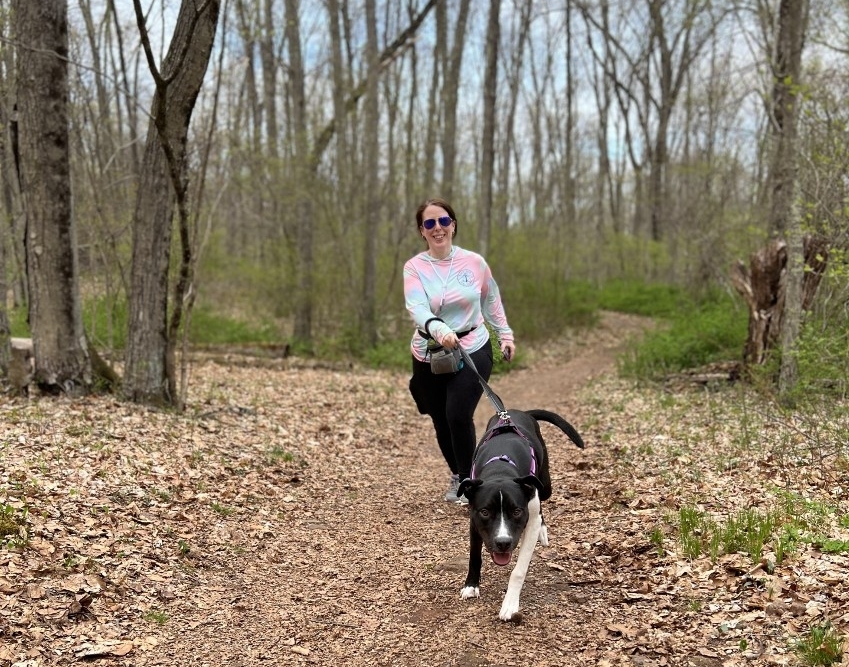Dog Feeding Guidelines: How to Determine Your Dog’s Activity Level.
At NorthPoint Pets & Company, we are dedicated to transforming pet health through science-based nutrition and personalized care. We aim to educate pet parents on crucial aspects of pet nutrition that are often overlooked or misunderstood. One significant issue is the dog feeding guidelines provided by pet food companies, which can lead to overfeeding and associated health problems.
Why Feeding Recommendations Can Be Misleading
Most pet food feeding guidelines are based on the needs of moderately active dogs. However, these recommendations don’t account for the fact that many pets today lead very sedentary lifestyles. Our dogs often get just 20 minutes in the yard or a short walk each day. Additionally, many dog owners unintentionally mismeasure their pet’s food with incorrect measuring utensils or by overlooking differences in calorie density when switching foods. This can further complicate ensuring your dog receives the appropriate amount of nutrients and calories for their activity level. These disparities can lead to overfeeding, resulting in weight gain, obesity, and related health issues like joint disease and accelerated aging.
Understanding Activity Levels: Low, Medium, and High
Veterinary nutritionists classify dogs into three activity levels when calculating their caloric needs:
| Activity Level | Description | Miles per Day | Moderate Activity Time | Intense Activity Time | Caloric Needs |
| Low Activity | Dogs that spend most of their time indoors with limited physical exercise. They might only have short walks or play sessions. | Less than 2 miles | Less than 30 minutes | Less than 10 minutes | Lower caloric needs to maintain a healthy weight. |
| Medium Activity | Moderately active dogs with regular daily walks, some playtime, and occasional runs or hikes. | 2-3 miles | 30-60 minutes | 10-20 minutes | Balanced caloric needs reflecting moderate energy expenditure. |
| High Activity | Highly active dogs involved in strenuous activities like long-distance running, agility training, or working dogs with demanding physical tasks. | More than 3 miles | More than 60 minutes | More than 20 minutes | Significantly higher caloric intake to support high energy requirements. |
Based on this information, the majority of dogs fall in the low activity category. The average dog gets a brief walk in the morning, another walk when owners arrive home from work, and maybe a short play session in the yard. The majority of their day is spent sleeping or lounging. Unless the dog is walking an average of 2-3 miles a day, it generally falls in the low activity range.
With that said, very few dogs fall into the moderate or “active” category. Even if your dog gets exercise 2-3 times a week, they can still fall in the “low activity” range.
The Emotional Impact of Overfeeding
We know it can be tough to hear that our pets might be overweight or that we’re overfeeding them. After all, we show our love through treats and meals. But, just like in humans, maintaining a healthy weight is crucial for their well-being. Think of it this way: by feeding them the right amount, you’re ensuring they live a longer, healthier, and happier life.
A Gentle Approach to Healthy Change
We understand that increasing your pet’s activity might not always be feasible due to time constraints. However, there are simple, effective changes you can make to improve your pet’s health:
- Tailored Feeding Plans: Consider adjusting the portion sizes based on your pet’s activity level. We can help you calculate the right amount of food for your pet’s specific needs.
- Healthy Treats: Opt for low-calorie nutritious treats and use them sparingly. Fresh fruit and vegetables can replace high calorie processed biscuits. Treats should complement your pet’s diet, not comprise a significant portion of their daily intake.
- Regular Monitoring: Keep an eye on your pet’s weight and body condition. Stop in anytime to use our dog scale. While you’re here, talk to one of our friendly team members to discuss your pet’s nutrition plan.
- Enrichment Activities: While increasing physical activity might be challenging, mental stimulation is equally important. Puzzle toys, interactive games, and training sessions can keep your pet engaged and active.
Tailored Nutrition for Your Dog
At NorthPoint Pets & Company, we’re committed to supporting you every step of the way. We offer a broad selection of pet foods and essential supplements, backed by research and tailored to various needs and budgets. Our team is here to provide expert advice and personalized care to ensure your pet thrives.
Remember, small changes can make a big difference in your pet’s health. By adjusting their diet and incorporating enriching activities, you can help your pet lead a happier, healthier life.
*This article is for informational purposes only. It is not meant to provide medical advice or replace the advice of a qualified veterinarian.





